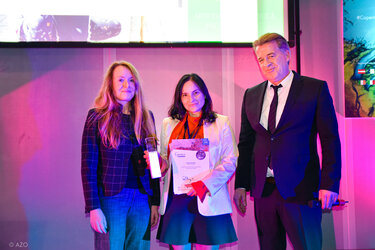Accept all cookies Accept only essential cookies See our Cookie Notice

About ESA
The European Space Agency (ESA) is Europe’s gateway to space. Its mission is to shape the development of Europe’s space capability and ensure that investment in space continues to deliver benefits to the citizens of Europe and the world.
Highlights
ESA - United space in Europe
This is ESA ESA facts Member States & Cooperating States Funding Director General Top management For Member State Delegations European vision European Space Policy ESA & EU Space Councils Responsibility & Sustainability Annual Report Calendar of meetings Corporate newsEstablishments & sites
ESA Headquarters ESA ESTEC ESA ESOC ESA ESRIN ESA EAC ESA ESAC Europe's Spaceport ESA ESEC ESA ECSAT Brussels Office Washington OfficeWorking with ESA
Business with ESA ESA Commercialisation Gateway Law at ESA Careers Cyber resilience at ESA IT at ESA Newsroom Partnerships Merchandising Licence Education Open Space Innovation Platform Integrity and Reporting Administrative Tribunal Health and SafetyMore about ESA
History ESA Historical Archives Exhibitions Publications Art & Culture ESA Merchandise Kids Diversity ESA Brand Centre ESA ChampionsLatest
Space in Member States
Find out more about space activities in our 23 Member States, and understand how ESA works together with their national agencies, institutions and organisations.
Science & Exploration
Exploring our Solar System and unlocking the secrets of the Universe
Go to topicAstronauts
Missions
Juice Euclid Webb Solar Orbiter BepiColombo Gaia ExoMars Cheops Exoplanet missions More missionsActivities
International Space Station Orion service module Gateway Concordia Caves & Pangaea BenefitsLatest
Space Safety
Protecting life and infrastructure on Earth and in orbit
Go to topicAsteroids
Asteroids and Planetary Defence Asteroid danger explained Flyeye telescope: asteroid detection Hera mission: asteroid deflection Near-Earth Object Coordination CentreSpace junk
About space debris Space debris by the numbers Space Environment Report In space refuelling, refurbishing and removingSafety from space
Clean Space ecodesign Zero Debris Technologies Space for Earth Supporting Sustainable DevelopmentLatest
Applications
Using space to benefit citizens and meet future challenges on Earth
Go to topicObserving the Earth
Observing the Earth Future EO Copernicus Meteorology Space for our climate Satellite missionsCommercialisation
ESA Commercialisation Gateway Open Space Innovation Platform Business Incubation ESA Space SolutionsLatest
Enabling & Support
Making space accessible and developing the technologies for the future
Go to topicBuilding missions
Space Engineering and Technology Test centre Laboratories Concurrent Design Facility Preparing for the future Shaping the Future Discovery and Preparation Advanced Concepts TeamSpace transportation
Space Transportation Ariane Vega Space Rider Future space transportation Boost! Europe's Spaceport Launches from Europe's Spaceport from 2012Latest

Bangkok’s green lung
Thank you for liking
You have already liked this page, you can only like it once!
Captured on 22 January 2019 by the Copernicus Sentinel-2B satellite, this true-colour image shows Thailand’s most populous city Bangkok, and its ‘Green Lung’ Bang Kachao.
The UN International Day of Forests is held annually on 21 March. It raises awareness of the importance of all types of forest and the vital role they play in some of the biggest challenges we face today, such as addressing climate change, eliminating hunger and keeping urban and rural communities sustainable. As the global population is expected to climb to 8.5 billion by 2030, forests are more important than ever.
This year, the International Day of Forests put a particular focus on education, but also on making cities a greener, healthier and happier place to live. In cities, trees can help many urban challenges. They act as air filters by removing pollutants, reduce noise pollution, offer shade and provide an oasis of calm in an otherwise busy urban environment, for example.
While Bangkok, which is home to over eight million people, is an example of ongoing efforts being made to increase green spaces to improve city life, it also has a much-valued green haven, which can be seen in the centre of the image.
This horseshoe or lung-shaped, green oasis is Bang Kachao and is in the middle of the bustling city.
Rich in gardens, mangroves and agricultural fields, the 2000 hectares of land is a significant contrast to the vastness of the city’s urban sprawl. Fighting Bangkok’s traffic and air pollution, Bang Kachao’s lush green forest provides the dense city, and the surrounding Samutprakan province, with a flow of fresh air.
The government-protected oasis of green is wrapped around the Chao Phraya River, which is seen flowing through the city of Bangkok before emptying into the Gulf of Thailand.
Copernicus Sentinel-2 allows urban growth to be monitored accurately, providing essential information to urban planners and decision-makers, and is a prime mission for monitoring the health of the world’s vegetation.
-
CREDIT
contains modified Copernicus Sentinel data (2019), processed by ESA -
LICENCE
CC BY-SA 3.0 IGO or ESA Standard Licence
(content can be used under either licence)

Bangkok, Thailand

Earth from Space: Seoul, South Korea

Earth's green lungs

Earth from Space: Kunshan, China















 Germany
Germany
 Austria
Austria
 Belgium
Belgium
 Denmark
Denmark
 Spain
Spain
 Estonia
Estonia
 Finland
Finland
 France
France
 Greece
Greece
 Hungary
Hungary
 Ireland
Ireland
 Italy
Italy
 Luxembourg
Luxembourg
 Norway
Norway
 The Netherlands
The Netherlands
 Poland
Poland
 Portugal
Portugal
 Czechia
Czechia
 Romania
Romania
 United Kingdom
United Kingdom
 Slovenia
Slovenia
 Sweden
Sweden
 Switzerland
Switzerland

























